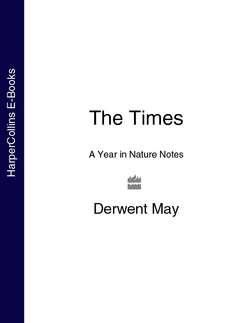Читать книгу The Times A Year in Nature Notes - Derwent May - Страница 40
3rd February
ОглавлениеWRENS, WHICH WERE still singing vigorously in November, have fallen silent during the past two months. The short hours of daylight have kept them busy all day, searching for enough insect food to see them through the long, cold night. Their tiny bodies quickly lose heat in the chill air. But with February their rapid song begins to be heard again from the dead bracken and the hedge bottoms. As the month proceeds they will start to sing higher up in the bushes and trees: they are advertising for a mate, or disputing with their neighbours over territorial boundaries. Two males can sometimes be seen waving their wings at each other in an aggressive display, or even fighting quite fiercely with beaks and claws among the branches.
On oak trees, the scaly brown buds are arranged in spirals along the twigs, with a cluster of buds at the tip. A butterfly that lays its eggs exclusively on oak twigs is the purple hairstreak, an almost-black butterfly with a purple sheen that flies in July. The eggs lie on the twigs, well glued to them, from August to April, when the caterpillars emerge and eat the young leaves.
